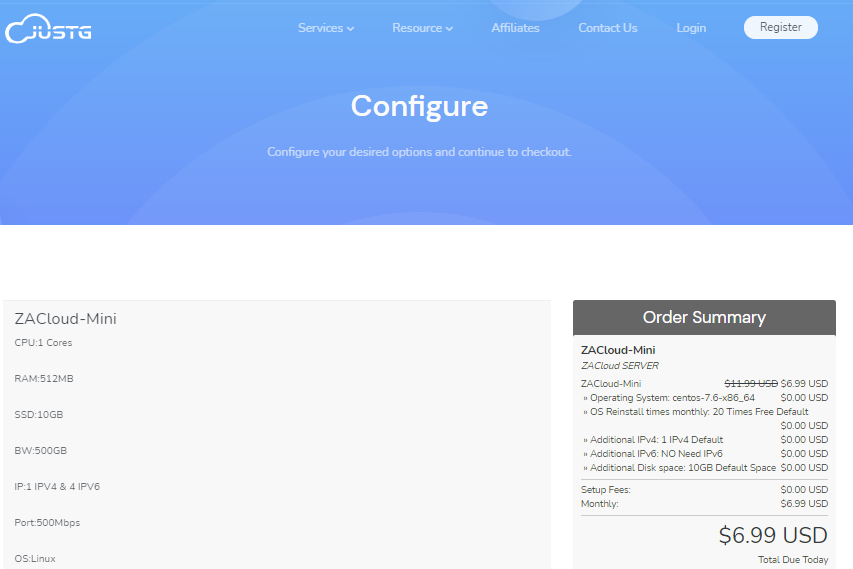监测美国国家水质监测网络 总结报告
A National Water Quality Monitoring Networkfor U.S.Coastal Waters and their TributariesPrepared by
The Advisory Committee on Water Information,andthe National Water Quality Monitoring CouncilRequested by
The Council on Environmental Quality,
The National Science and Technology Council,andThe Joint Subcommittee on Ocean Science and TechnologyApril 2006
Report and appendices are available on-line at:http://acwi.gov/monitoring/network/design/
This report on A National Water Quality Monitoring Network for U.S.Coastal Watersand their Tributaries(Network)has been prepared by the National Water Qual ityMonitoring Counci l (Monitoring Counci l),a sub-group of the Advisory Committee onWater Information(ACWI).The ACWI approved this report and presented it to therequesting organizations on Apri l 5,2006.ACWI was tasked by the President’sCounci l on Environmental Qual ity, the National Science and TechnologyCounci l ’sSubcommittee on WaterAvai labi l ityand Qual ity,and the Joint Subcommittee onOcean Science and Technology,as a result of recommendations in Chapter 15 of theFinal Report of the U.S.Commission on Ocean Pol icy(COP,2004).
The Monitoring Counci l ,co-chaired byGai l Mal lard,U.S.Geological Survey andCharles Spooner,U.S.Environmental Protection Agency, led this effort,supported bya Network Steering Committee and four Network Work Groups.About 80 participantsfrom Federal and State governments, universities,water associations and the privatesector participated actively in the design of this Network and the preparation of thereport.Al l Network participants are l isted in Appendix 1-2 of the report.
In approving the report, the ACWI identified the fol lowing:
1. The current report is toserve as a network design and a planning documentfor the Network. It is understood that many implementation issues are pending.
These include program management and resource needs.
2. The report wi l l recommend Regional Pi lot(s) [l ikelywithin IOOS Regions]as aproof of concept–a way to move forward to test the Network Design.
3. The report wi l l recommend creation of a smal l inter-agency programcoordination staff,with dedicated FTE to provide leadership and coordination.
The staff wi l l help to faci l itate development of the pi lot(s), track next steps,develop and track metrics,and document the process and progress of the
Network.Program staff would report progress to and seek guidance from
ACWI ’s Monitoring Counci l .
4. Ajoint inter-agency briefing wi l l be scheduled at the Executive Office level tofurther inform the requesting organizations(CEQ,NSTC/SWAQ and JSOST)as wel l as the President’s Office of Management and Budget,and Office of
Science and Technology Pol icy.This briefing occurred on Apri l 5,2006,andadditional briefings for related committees in the COP structure are scheduled.The network design and report wi l l be a focus of the 5th National Monitoring
Conference in San Jose,Cal ifornia,May 2006,with 600 registrants anticipatedfrom throughout the monitoring community.
A National Water Quality Monitoring Network
For U.S.Coastal Waters and their Tributaries
Executive Summary
The annual cost of water resource monitoring is hundreds of millions of dollars.Yet,numerous reports in recent years indicate that monitoring has been and remainsinsufficient and lacks coordination to provide comprehensive information about U.S.water resources. In 2004, the U.S.Commission on Ocean Policy recommended anational monitoring network to improve management of ocean resources:
―Ongoing monitoring is essential to assess the health of ocean and coastalecosystems and detect changes over time.More than any other measure,monitoring provides accountability for management actions. The nation needs acoordinated,comprehensive monitoring network that can provide the informationnecessary for managers to make informed decisions,adapt their actions as needed,
In response to the 2004 Ocean Policy Commission report, the Council on EnvironmentalQuality(CEQ), the National Science and Technology Council (NSTC)Subcommittee onWater Availability and Quality(SWAQ),and the Joint Subcommittee on Oceans Scienceand Technology(JSOST)charged the Advisory Committee on Water Information(ACWI)with the task of designing a national water quality monitoring network.ACWI is afederal advisory committee,which has membership representing federal and nonfederalinterests with a wide range of responsibilities for water resources.ACWI formallyaccepted the charge to design a national monitoring network in February 2005,anddelegated leadership for the effort to the National Water Quality Monitoring Council(Council).About 80 individuals,who represent 40 different organizations, includingfederal and state agencies,academia, interstate organizations,and the private sector,accomplished the network design.
ACW I是一个联邦咨询委员会,成员有代表的是为水资源的职责范围广泛的联邦政府和非联邦的利益。 ACWI正式接受了负责设计2005年2月全国监测网络,为向全国水质监测委员会(理事会)努力委派的领导。大约80个人,谁代表40个不同的组织,包括联邦和国家机构,学术界,州际组织和私营部门,实现了网络设计。
Network Objectives and Attributes
This report contributes to water quality monitoring in the U.S.by proposing a nationalwater quality monitoring network for U.S.coastal waters and their tributaries(hereinreferred to as the―Network‖). The proposed Network shares many attributes withongoing monitoring efforts but is unique in that it uses a multidisciplinary approach and
1
addresses a broad range of resource components,from upland watersheds to offshorewaters and does so using an integrated approach. Specifically, the proposed Network hasseveral key design features:
1. Clear objectives linked to important management questions (outlined in TableES-1 and discussed in more detail in the report).
2. Linkage with the Integrated Ocean Observing System(IOOS),which is anintegrated system of observations and data management that routinely providesinformation about coastal waters and coastal ecosystems for eleven U.S. IOOSRegions.
3. A multi-resource and multidisciplinary approach that integrates water resourcecomponents from uplands to the coast and that integrates physical,chemical,andbiological characteristics of water resources.
4. Flexibility in design over time.After interpreting data, some locations orconstituents may drop from the Network,whereas other locations or constituentsmay fill critical gaps. Improvements in technology over time may also result indesign changes.
5. The Network stresses the importance of metadata,quality assurance procedures,comparable methodology,and data management that allows readily accessibledata storage and retrieval.
Table ES-1.Alignment of NMN Objectives and Management Questions
2
Continuing Need for Monitoring Outside the Network
No one monitoring design can begin to address or answer all of the Nation’s water-resource issues or questions. The proposed Network,which primarily provides criticalinformation about the quality of coastal waters and their tributaries at regional andnational scales,does not incorporate or replace all ongoing water quality monitoring. Forexample,monitoring designed to identify and track water issues and environmentalresponses to management actions within small rivers, lakes,reservoirs, local groundwater aquifers,and in smaller watersheds should continue as the primary responsibility ofState and local agencies. In addition,monitoring designed to address drinking waterissues must continue.Ground water monitoring in large inland aquifers is also criticaland should continue,although it is outside the scope of the Network. The key point isthat a great deal of monitoring does not fall under the umbrella of the proposed Network.For resource management,continuing this monitoring is critical.
该网络自身也存在一定的局限性, 因为在不可能一次性解决所有问题。 目前,该网络主要以提供海岸水质及入海河流水质的关键信息,没有协同或替换所有现存的水质监测网络。例如,对小河流、湖泊、水库、区域地表水含水土层、小流域的监测都应该成为未来的主要任务; 另外,对于饮用水的监测也要继续。
NetworkDesign
Table ES-2 shows an overview of the Network design,which lists (1) the monitoredresource and the purpose of monitoring, (2) site-selection procedure and the number ofmonitored sites, (3) sampling frequency,and(4) interval between periods of intensivesampling.A total of 149 estuaries are included in the Network(see Table 3-3 for a fulllisting along with their maj or tributaries).Using a probability-based design to selectsampling sites, IOOS Regions will monitor these estuaries to determine conditionsindividually and by IOOS Region. Each estuary will also be monitored at sites along thesalinity gradient to provide information about transport of water and materials throughthe estuary to the coastal ocean.A probability-based design for site selection,as well asfor shipboard surveys targeted for specific purposes,and remote sensing,will help tomonitor nearshore marine waters, the Great Lakes,and Great Lakes embayments.
3
Shipboard cruises and remote sensing will help to monitor the vast ocean from threenautical miles to the seaward edge of the Exclusive Economic Zone.
The focus for river monitoring is on sampling(1)rivers that represent 90 percent of theoutflow of maj or inland watersheds, (2)rivers that flow directly into Network estuaries,and(3)rivers that flow directly into the Great Lakes and drain watersheds greater than250 square miles in area.Network river monitoring will allow calculation of seasonaland annual fluxes of freshwater and loads of constituents from the uplands to coastalmarine waters and the Great Lakes.Ground water will be monitored where directdischarge into coastal waters is important based on criteria outlined in Chapter 3. Thefocus for atmospheric deposition monitoring is at sites chosen to represent direct input tocoastal waters. Coastal beaches will be monitored for bacterial indicators of human oranimal waste which determine the suitability of water for swimming and other primarycontact recreation. The design for monitoring wetlands is deferred for the present,pending additional research on methods and approaches.
对于河流监测的重点是采样(1)河流的主要代表百分之九十流域内陆流出, (2)河流直接流入网络河口, (3)河流直接流入大湖流域和排水流量面积大于250平方公里。河流监测网络将允许计算从高地向沿海海域和大湖区的淡水和成分负荷季节和年度通量。地下水监测情况将直接排放到沿海水域重要的是在第三章中所述的标准为基础。对大气沉降监测的重点是代表直接输入到沿海水域的选择的网站。海岸沙滩将被监视接触康乐细菌指标的人类或动物废物,主要确定了适宜的水游泳和其他。为监测湿地设计是推迟至今, 以待更多的研究方法和手段。
Constituents
Constituents to be monitored include physical characteristics, inorganic and organicchemical concentrations,and biological conditions.Many of the same measurementswill be made in all resource components and no measurement is made in fewer than threeof the components. This is an important aspect of the overall design because thecontinuity of measurements will provide a better understanding of the linkages amongresources.Development of a list of specific analytes and environmental parameters thatwill serve as a set of core measurements for the Network will require consensus amongexperts and is one of the early steps needed for Network implementation.
Data Comparability,Data Storage,and Data Access
Full implementation of the Network will require the use of data collected by a number offederal, tribal, state, local,academic,and private sources.Data must be comparable toallow integration into a coherent assessment of the condition of and trends in the qualityof the Nation’s coastal waters and their tributaries.A successful and efficient national-scale compilation and integration of environmental monitoring data will require:
known and appropriate methods;
documented quality assurance and quality control;
metadata;and
access to data and related information.
A survey of several agencies that collect nitrate data in the Delaware River Basinrevealed that most used similar methods but that routine quality assurance and quality
4
maintain metadata that are available electronically.
A survey of 173 monitoring programs from five regions of the U.S. (Chesapeake Bay,Delaware Bay,Gulf of Maine,Gulf of Mexico,and Pacific Northwest),plus 4 federaldatabases(NWISWeb,NAWQA Data Warehouse,STORET,and Legacy STORET)wasconducted to evaluate the current status of water quality data management systems.These programs represent various types of data(e.g.,chemistry,biology, spatial)fromvarious types of organizations(volunteer groups,nonprofit groups,and state and federalagencies),collected by a variety of methods(direct observation, sampling,continuousmonitoring,remote sensing)within various environmental settings and parts of the watercycle. The evaluation helped to acquire information regarding four categories: (1)accessmethod, (2) search and retrieval capabilities, (3) level of metadata available,and(4)archive method.None of the programs evaluated had all the capabilities desired for theNetwork data management and access system. Furthermore, the lack of informationregarding metadata and archival methods are potential impediments to developing aNetwork access system.
As the surveys related to methods comparability,quality assurance and quality control,and data management indicate, it will take significant effort to integrate data fromdifferent sources into the proposed monitoring Network. To fully engage potentialparticipants, it will be necessary to work on both of these issues, to identify how theirexisting procedures could be adjusted to make them compatible with the Network.
Monitoring and Modeling
There is an ever-increasing demand for environmental monitoring data and otherinterpretive products derived from those data.However, there will never be enoughmoney to collect needed data in all of the places and at all of the times.Using availabledata to improve the ability to extrapolate to unmonitored areas partially compensates forthis.Among the tools that will help this effort are improved statistical analyses of dataand development and use of models to interpret environmental data and facilitatescientific understanding of complex environmental issue s.
In terms of their modeling approaches, inclusion of resource areas,and spatial andtemporal domains,currently available water quality models vary. Some models arestatistical in nature; that is, they are empirical and derived from a set of observations.Others are mechanistic or numerical,based on a set of relationships betweenenvironmental characteristics and functioning or performance of an ecosystem.All ofthese types of models require a broad spectrum of observations and an array of quality-assured monitoring data. (监测数据质量保证? )—Routine monitoring programsoften do not have sites in optimal locations for model verification or other targetedapplications. The flexibility of site selection and inclusion of targeted monitoring sites inthe proposed Network alleviates such shortcomings.
5
A fully implemented Network will contribute to advances in both modeling andmonitoring by providing data that address the following interconnections:
•模型的改进,更多的数据将有助于增加过程的理解,提高观察分析和预测能力更大。 •模型试验,实用的信誉和产出模型的表现,将验证增强了实地核查提供的数据,或数据点模型的内部测试。 •实验设计模型提供的产出,可以发现主要的环境特征的变异形态,可作为隐藏的基础。推理约•设计有效的频率采样计划,如改善空间尺度和意见变量,模型可以提供或有关地区的推论意义的变量是难以衡量定期或直接或可能会丢失从监测方案,但它可以大大影响程序或参数进行调查。 •遥感数据涵盖广泛的模拟模型地理区域,往往需要从卫星获得的数据证实,飞机或岸基与传感器的范围相当广,覆盖范围和手段,天气取样停泊和漂流浮标。 •应用程序的模型质量的产出强烈涉及到模型的假设和输入数据。如果模型,对信息基础实验中取得的具体使用,数据来自国家和区域规模的监测方案将获得更广阔的视野和提供完善的建模结果的质量。
Model improvement–More data will contribute to increased understanding ofprocesses, improved analysis of observations,and greater predictive capability.
Model testing–The credibility and utility of model performance and outputs willbe enhanced by providing field verification data,or data to validate interior testpoints of models.
Experimental design–Models provide outputs that reveal patterns of variability inkey environmental characteristics and may serve as the basis for designingefficient sampling schemes, such as improvements in the spatial scale andfrequency of observations.
Inference about hidden variables (推断隐含变量)–Models can provideinferences about the significance of variables that are difficult to measureroutinely or directly or may be missing from the monitoring program but whichcould substantially influence the processes or parameters being investigated.
Remotely sensed data–Model simulations encompassing broad areas orgeographical regions often require corroborating data obtained from satellite,aircraft,or shore-based sensors with a wide swath,and by means of synopticsampling coverage from moored and drifting buoys.
Application–The quality of model output strongly relates to model assumptionsand input data. If models,based on information gained in specific experimentsare used,data obtained from national and regional scale monitoring programs willprovide a broader perspective and improve the quality of modeling results.
Recommendations and Next Steps
The Network design concepts presented in this report can best be tested and refinedthrough one or more pilot studies. The process of planning and conducting these pilotstudies will address some of the next steps listed below. The recommended scale for thepilot studies is either an IOOS region or sub-region. To be consistent with the Networkdesign, the pilot studies should include all resource components.A study that monitoredonly rivers and estuaries or only the near shore environment would not be appropriate forassessing the Network design because one of the most important characteristics of theNetwork is the connectivity among resource components.Another important criterion for
6
selection of the pilot studies would be the willingness of different sectors of themonitoring community to participate in the collaborative effort.
Creation of a small inter-agency program coordination staff,with dedicated personnel,will provide leadership and coordination of the next steps of Network implementation.This program coordination staff should help facilitate development of the pilot studies,coordinate and track the next steps in Network design,develop and track metrics,anddocument progress in Network implementation.A dedicated staff is needed to maintainthe level of effort and momentum to begin implementation of the Network.This effortgoes beyond what the volunteers who designed the Network and prepared this report cancontinue to invest.
It is appropriate for the Council and its parent organization,ACWI, to have a continuingrole in Network implementation because these are the two organizations chosen to leadthe Network design effort and they have a stake in its success. Program staff shouldperiodically report progress and seek guidance from the Monitoring Council. Finally,because the Network is included in the Administration’s plan to address therecommendations of the U.S.Commission on Ocean Policy,and because itsimplementation will need support at the policy level, the groups that requested creation ofthe Network design,CEQ and NSTC(SWAQ and JSOST), should have an on-going rolein Network implementation.
Next Steps: Important steps for Network implementation that need attention in the nearterm include:
1. Designate an inter-agency program coordination staff.
2. Select one or more pilot studies to begin Network implementation and test
Network design concepts.
3. Engage the monitoring community in dialogue about the Network to developsupport for implementation.
4. Further refine Network design details such as the list of core measurements,location of monitoring sites,and performance requirements for samplingprotocols and analytical methods.
5. Establish metadata standards and requirements for data systems.
6. Conduct a full inventory of on-going water quality monitoring efforts that mightcontribute to the Network.
7. Develop a set of metrics.
8. Identify resources needed by federal and non-federal agencies for Networkimplementation and work to secure those resources.
7
rfchost:洛杉矶vps/双向CN2 GIA,1核/1G/10G SSD/500G流量/100Mbps/季付$23.9
rfchost怎么样?rfchost是一家开办了近六年的国人主机商,一般能挺过三年的国人商家,还是值得入手的,商家主要销售VPS,机房有美国洛杉矶/堪萨斯、中国香港,三年前本站分享过他家堪萨斯机房的套餐。目前rfchost商家的洛杉矶机房还是非常不错的,采用CN2优化线路,电信双程CN2 GIA,联通去程CN2 GIA,回程AS4837,移动走自己的直连线路,目前季付套餐还是比较划算的,有需要的可...

NameCheap新注册.COM域名$5.98
随着自媒体和短视频的发展,确实对于传统的PC独立网站影响比较大的。我们可以看到云服务器商家的各种促销折扣活动,我们也看到传统域名商的轮番新注册和转入的促销,到现在这个状态已经不能说这些商家的为用户考虑,而是在不断的抢夺同行的客户。我们看到Namecheap商家新注册域名和转入活动一个接一个。如果我们有需要新注册.COM域名的,只需要5.98美元。优惠码:NEWCOM598。同时有赠送2个月免费域名...

JUSTG(5.99美元/月)最新5折优惠,KVM虚拟虚拟512Mkvm路线
Justg是一家俄罗斯VPS云服务器提供商,主要提供南非地区的VPS服务器产品,CN2高质量线路网络,100Mbps带宽,自带一个IPv4和8个IPv6,线路质量还不错,主要是用户较少,带宽使用率不高,比较空闲,不拥挤,比较适合面向非洲、欧美的用户业务需求,也适合追求速度快又需要冷门的朋友。justg的俄罗斯VPS云服务器位于莫斯科机房,到美国和中国速度都非常不错,到欧洲的平均延迟时间为40毫秒,...

-
青岛市建设工程电子交易系统有人在认真做事includingandroid支持ipad支持ios特斯拉苹果5tracerouteping命令和traceroute(tracert )在功能上的区别有哪些?ipad如何上网如何用手机流量在IPAD上上网win7如何关闭445端口如何关闭445端口,禁用smb协议kb4012598win7怎么查看电脑是否安装了 ms17 010